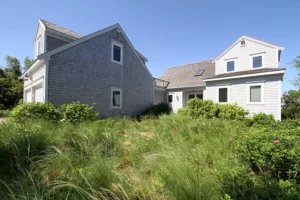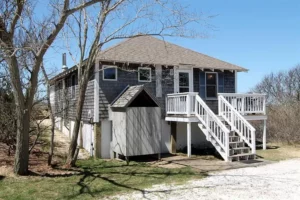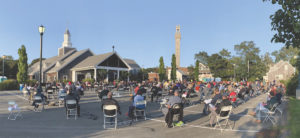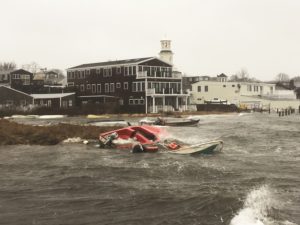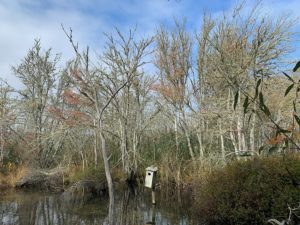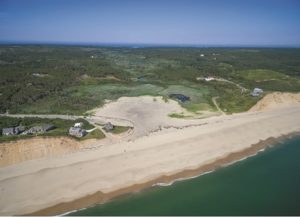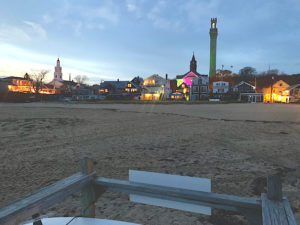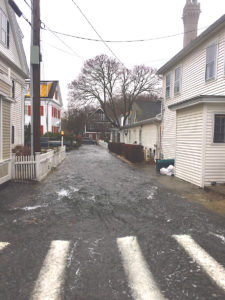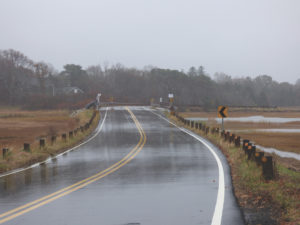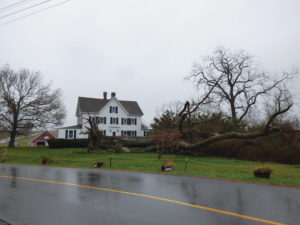PROVINCETOWN — Serious flooding used to be rare in Provincetown, but since 2018 four major floods have struck. And after a December 2022 flood brought water as deep as five feet into the Howland Street neighborhood, residents banded together, placing sandbags and putting up barriers in advance of each major storm since.
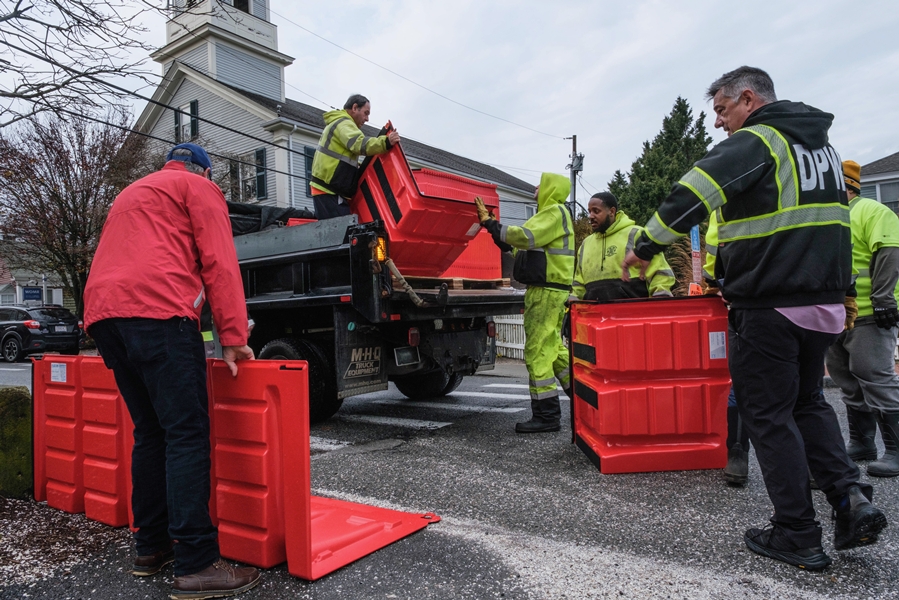
During the lead-up to the most recent storm on Dec. 11, the Provincetown Dept. of Public Works was setting up its own newly acquired barriers alongside them. The collaboration between the neighborhood coalition and town staff has been a good thing.
The town’s new barriers, known as Mayim flood barriers, are interlocking meter-wide L-shaped plastic structures designed by New York-based Garrison Flood Control and manufactured in Florida. On the day of the storm, DPW workers set them up in front of the parking lots at St. Mary of the Harbor and the Ice House Condominiums on Commercial Street.
It was the dept.’s first time erecting the barriers on town property, and although this storm did not result in noticeable flooding, the effort served as a “dry run” for the system, said Assistant Town Manager Dan Riviello. The goal is to slow down rushing floodwaters.
“If we can hold the water back or slow it down,” said Riviello, “we’re going to be doing better than we’ve been in the past.”

DPW Director Jim Vincent said he first heard about the new barrier design from Bradford Street homeowner Jeanmarie Kaeselau, who is part of the neighborhood group that has formed a coalition to prepare for storms. Other neighbors including Marc Guerrette and Quinn Taylor were on hand Dec. 11 to help set up and advise on barrier placement.
The DPW’s ability to protect properties is limited because it cannot legally deploy sandbags on private property. “People think ‘the town will save us,’ ” said Guerrette, who rents an apartment at 6 Daggett Lane. “It’s not the town’s job to protect your property. You’ve got to be proactive.”
The Howland Street area is particularly susceptible to flooding. The area is at the base of a hill, a nearby seawall sends splashes into the parking lots, and the land slopes inland, carrying water straight onto Commercial Street. In the 2022 flood, water rushed down Howland Street and Daggett Lane and onto Bradford Street in a matter of minutes, flooding properties around it.
That flood looms large in the minds of those affected. “None of us saw it coming,” said Taylor, whose house at 496 Commercial St. was flooded with knee-deep water within 30 minutes, forcing him to leave for a year while repairs were made.
Kaeselau lost three vehicles, a music shed full of equipment, and the entire first floor of her home in the 2022 flood. “We were destroyed,” she said. “PTSD, I never fully understood. Now I do.”
Kaeselau and Taylor both said that their experiences clarified for them how much of a threat flooding is and how much more needs to be done about it. “Cold water in your knee-high wellies is not cute,” said Taylor, “but it motivates you.”
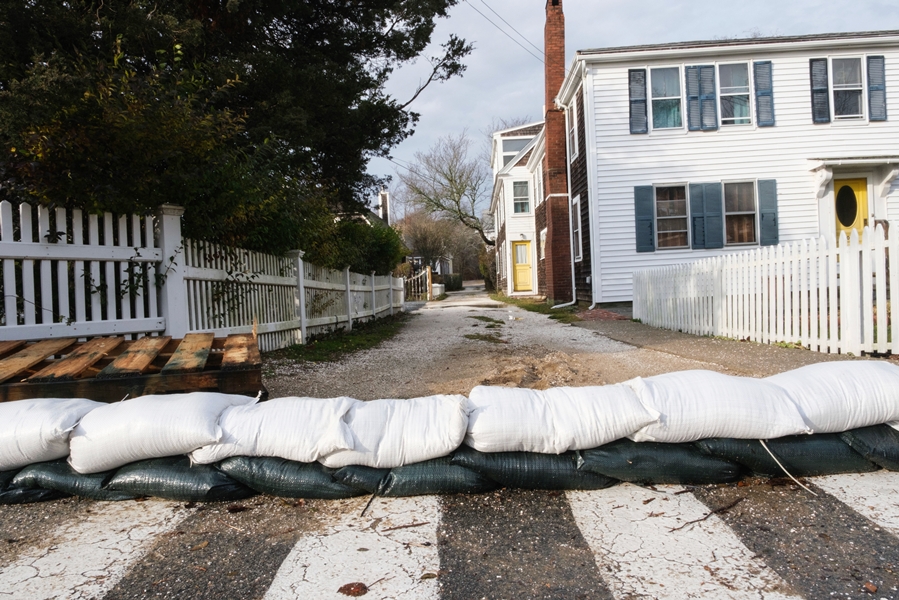
Once she had begun to recover from the 2022 storm, Kaeselau said, she started gathering neighbors’ contact information to establish a phone tree and coordinate flood responses. The neighbors began familiarizing themselves with what Kaeselau called “the trifecta” — wind, daily tides, and monthly tidal fluctuations. They also began sandbagging properties of part-time residents, with their permission, before storms. “We have volunteer firefighters,” said Guerrette. “Let’s have volunteer flood teams.”
“We want to stay here,” said Kaeselau, “so we’ve made it our mission to do what we can.”
When the next storm hit in December 2023, the neighbors assembled a wall of DPW-provided sandbags along Commercial Street that mostly kept water from rushing farther inland. And though Taylor’s house flooded a second time, the damage was restricted to his kitchen. “Compared to what I’d been through, that’s not that bad,” Taylor said.
The group of residents also began attending meetings of the Coastal Resilience Advisory Board, of which Kaeselau is now a member, and encouraged the DPW to develop its flood prevention practices.
Meanwhile, the DPW had not been idle. Kaeselau described how, after the December 2022 flood, she had emptied the house of water, and Vincent came by on his time off to check on her. “He saw me in there, just out of my mind, tearing up rugs,” she said. “And he just got down on his hands and knees and he started doing it with me.”
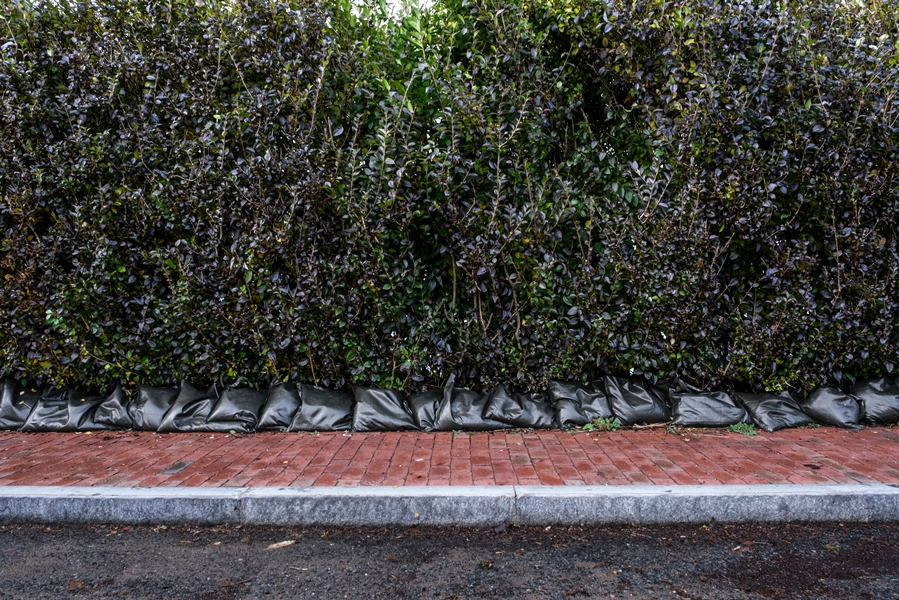
In the aftermath, staff members studied how the recent floodwaters had moved and began distributing pallets of sandbags before storms.
The DPW purchased the Mayim flood barriers because of their purported effectiveness, stackability, and ease of storage, Vincent said. According to the manufacturer, the weight of the water itself presses down on the bottom part of the device to hold the barrier in place. On Dec. 11, the barriers were deployed in about 10 minutes.
The DPW also purchased a new sandbagging machine that attaches to the arm of a front-end loader and can make 24 sandbags at once. “We had been so cautious with handing out sandbags,” said Vincent. “This storm, we had plenty of sandbags because we had the new machine.”
The DPW also began meeting with residents to develop the Howland Street Neighborhood Storm Action Plan. One of these meetings occurred two days before the storm last week. “The town jumped in,” Taylor said. “Jim Vincent is a hero. Dan Riviello is awesome.”
The Howland Street neighbors are planning to hold a community meeting at the East End Market later this winter — the store was closed for repairs for the rest of the winter after it was inundated by the 2022 storm. “It’s to remind people that ‘Guys, it’s storm season,’ ” Taylor said. “Here’s the group. When it starts coming, when you need help, we’re all here.”
Kaeselau said that this type of organizing should be happening across town. “The tides are rising. It’s a real thing,” she said. “It’s going to be more common every winter.”
Taylor echoed her thoughts. “If you don’t think it’s going to happen to you, you’re wrong,” he said. He encouraged people to watch the weather and tides and prepare for future flooding around them. “If it’s not your house that’s in immediate peril, it’s your neighbor. Help your neighbor.”
Editor’s note: An earlier version of this article, published in print on Dec. 19, stated that four major floods have struck Provincetown since 2008. The sentence should have read “since 2018.”


